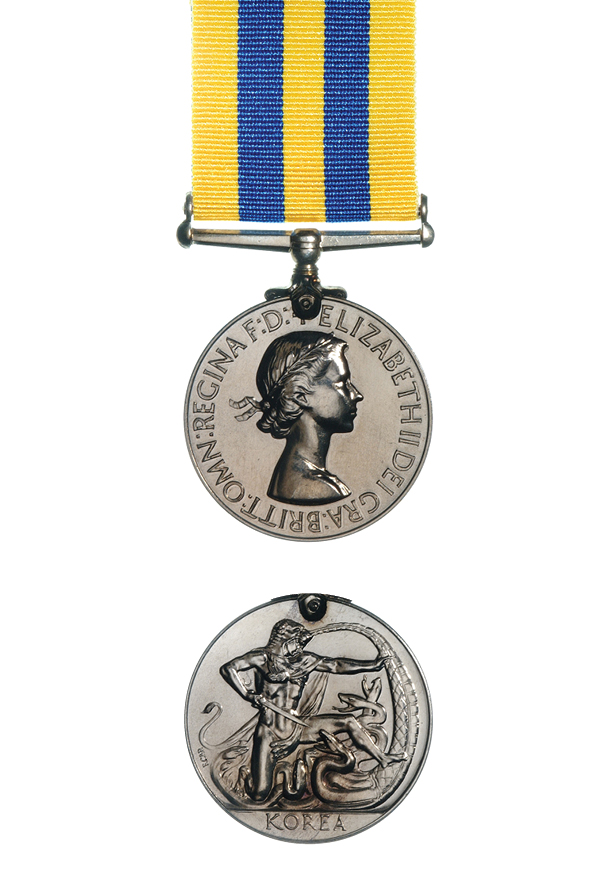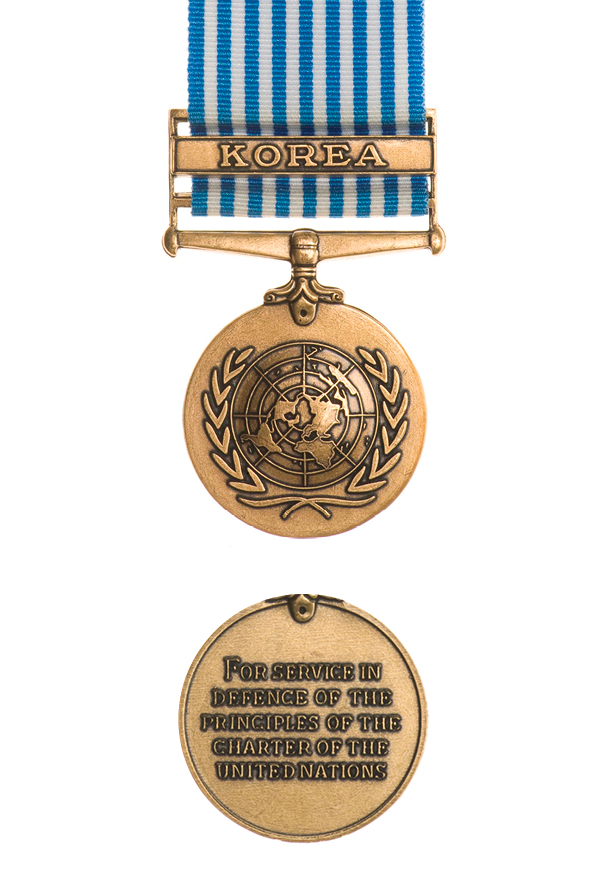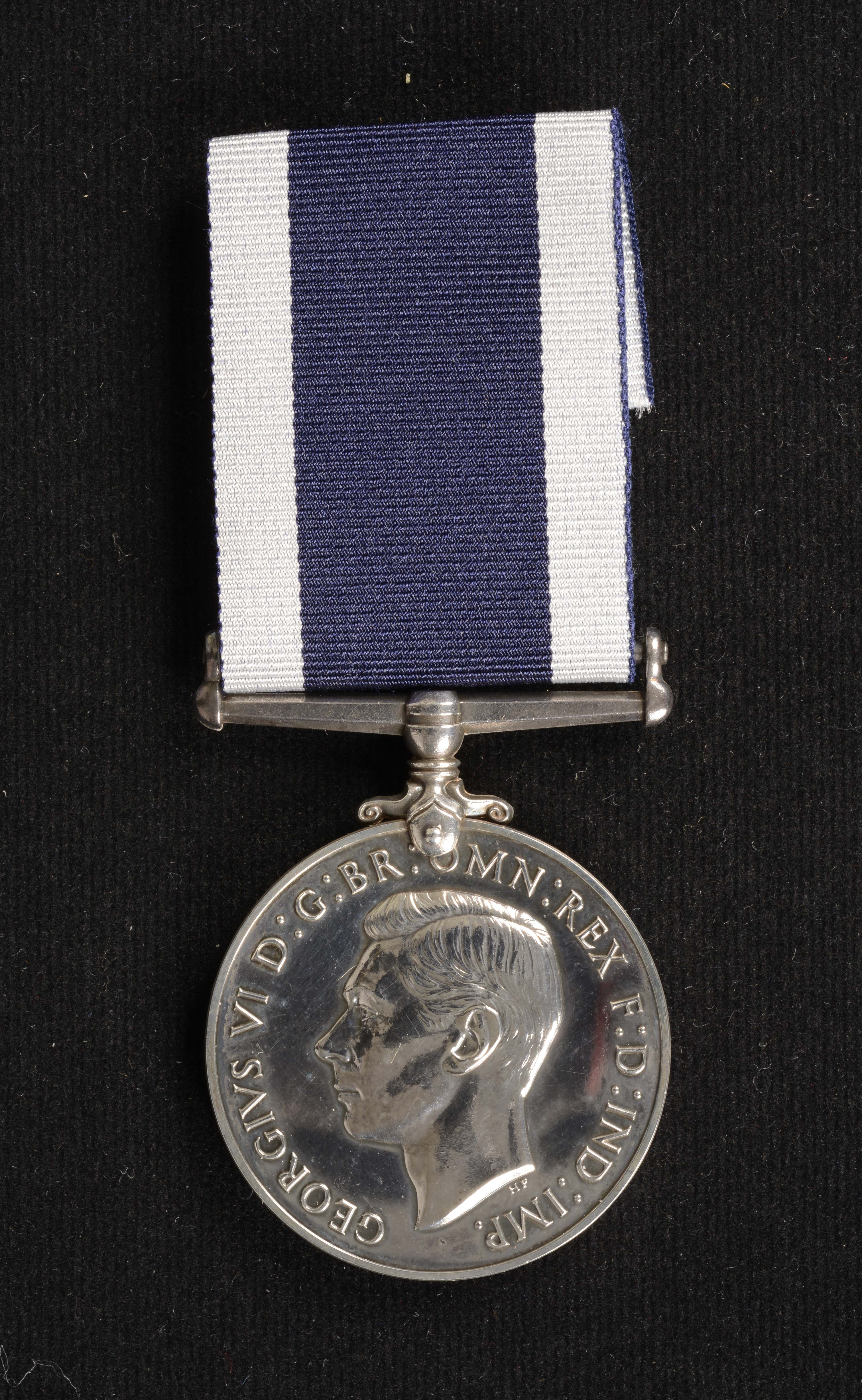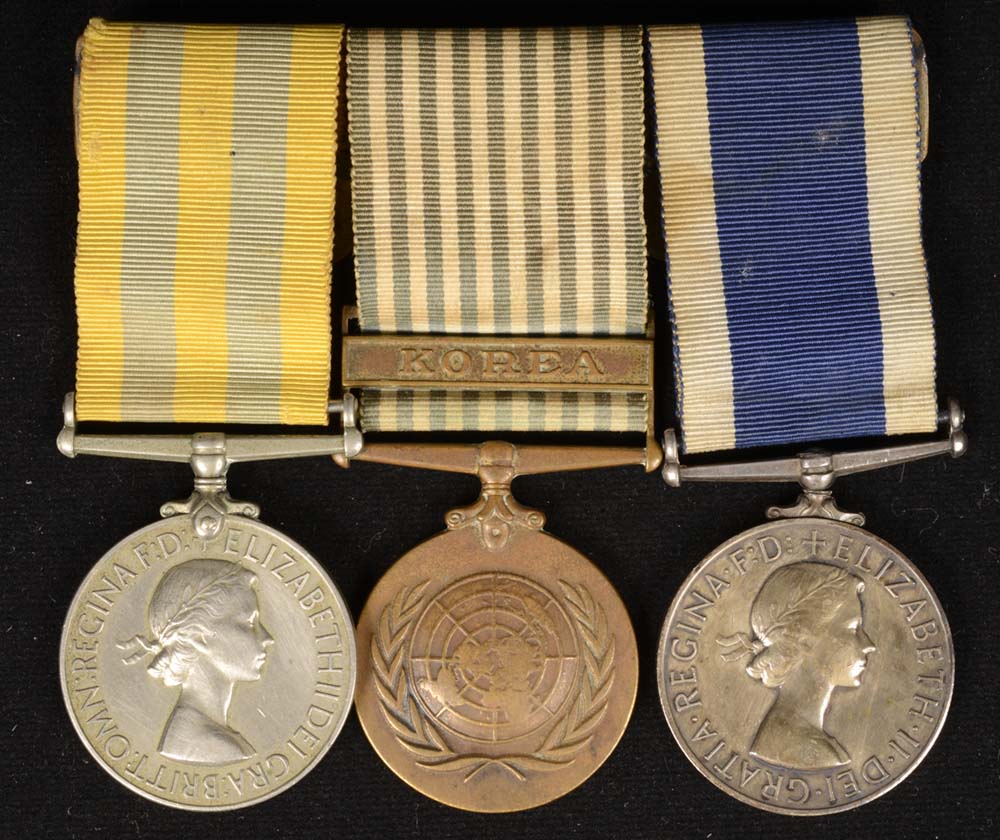

Display No. 3E
KENYON, Derek Frankland
Derek Kenyon joined the Royal Navy in November 1947 as an Ordinary Seaman. He served in numerous aircraft carriers, submarines, minesweepers, and shore establishments. He saw service in the Korean War and was discharged to the Royal Fleet Reserve in 1954. Kenyon then joined the Royal New Zealand Navy (RNZN) in 1959, serving in the patrol craft Maroro, the frigates HMNZ Ships Kaniere and Otago, as well as the shore establishments HMNZ Ships Tamaki and Philomel. In 1960, Kenyon served in HMNZS Rotoiti which was part of the Far East Strategic Reserve, protecting Commonwealth interests in South East Asian region. He was discharged from the RNZN in September 1971 having reached the rate of Chief Petty Officer.
Awarded medal(s)
Medal Description [Left to Right]:
The Korea Medal

This medal was instituted in 1951, to recognise the service of Commonwealth troops in the Korean War between 2 July 1950 and 27 July 1953. It is sometimes referred to as the Queen’s Korea Medal to differentiate it from the United Nations Korea Medal. For naval forces, qualification is 28 days or more afloat in the operational area or at least one day of shore duty. The medal’s reverse features Hercules wrestling the Hydra – a symbolic representation of communism. The ribbon has alternating yellow and blue stripes. Blue represents the United Nations.
United Nations Medal Korea

The United Nations Medal (Korea) was awarded for service during the Korean War and the year following the armistice (July 1950 to July 1954). It was the first international award created by the United Nations and features the UN emblem of a projection map of the world between two olive branches. The medal recognises the service of all military troops participating as part of the UN forces in Korea and was manufactured in the language of each country. It was also awarded to a limited range of civilians whose organisations were certified by the United Nations Commander-in-Chief as having directly supported military operations in Korea between 1950 and 1954.
Royal Naval Long Service and Good Conduct Medal

Awarded to ratings who have served a minimum of 15 years in the Royal Navy (previously 21 or 10 years), the first version of this medal was instituted in 1831 and it is still issued to Royal Navy personnel today. It features the reigning monarch’s head on the obverse and HMS Victory on the reverse with the recipient’s details engraved or impressed on the edge of the medal. This medal was also issued to eligible personnel serving in the New Zealand Division of the Royal Navy from 1921-1941 and then to Royal New Zealand Navy personnel from 1941-1981. In 1985 a New Zealand Royal Navy Long Service and Good Conduct Medal was introduced bearing the exact same design.

